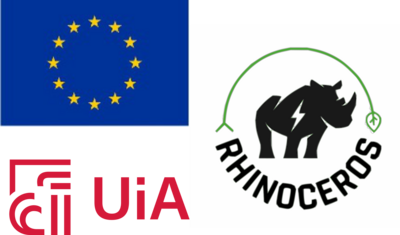Mekatronikk – UiA - RHINOCEROS
EU research project RHINOCEROS (Batteries reuse and direct production of high performances cathodic and anodic materials and other raw materials from batteries recycling using low cost and environmentally friendly technologies) coordinated by TECNALIA within EU Horizon Europe Program. RHINOCEROS will demonstrate a smart sorting and dismantling robotic system at TRL 6, enabling the automation of a battery repurposing production line.
